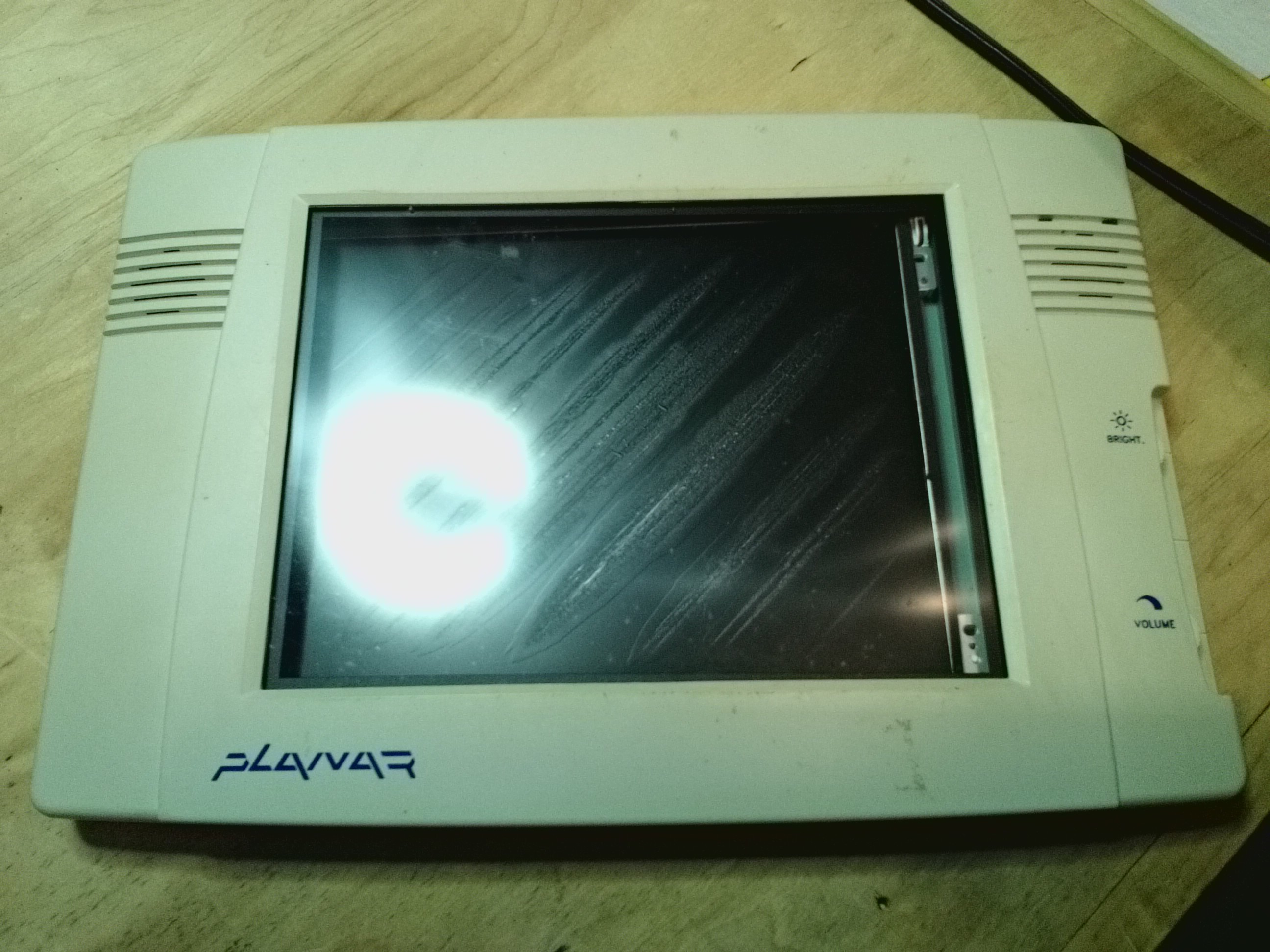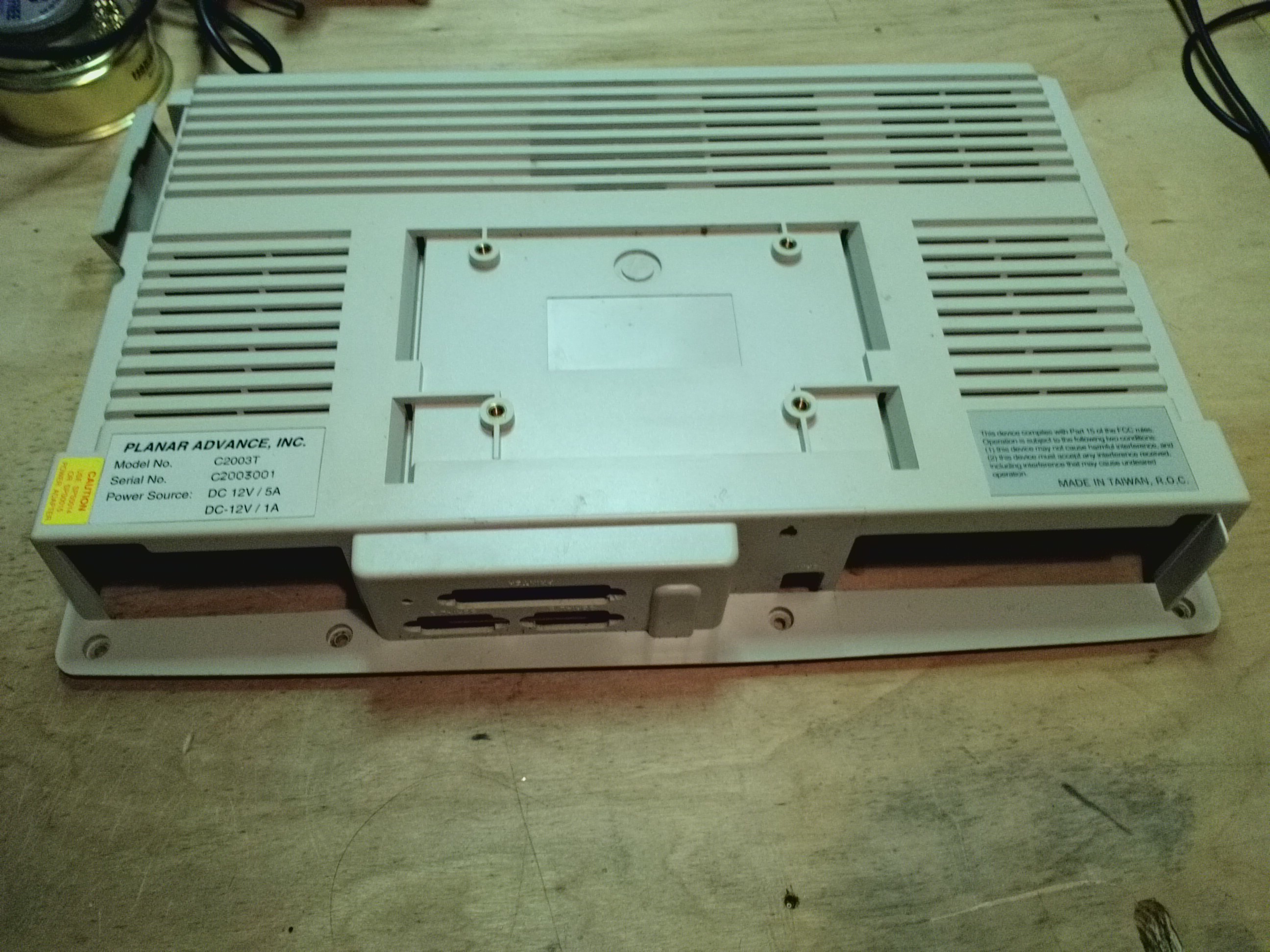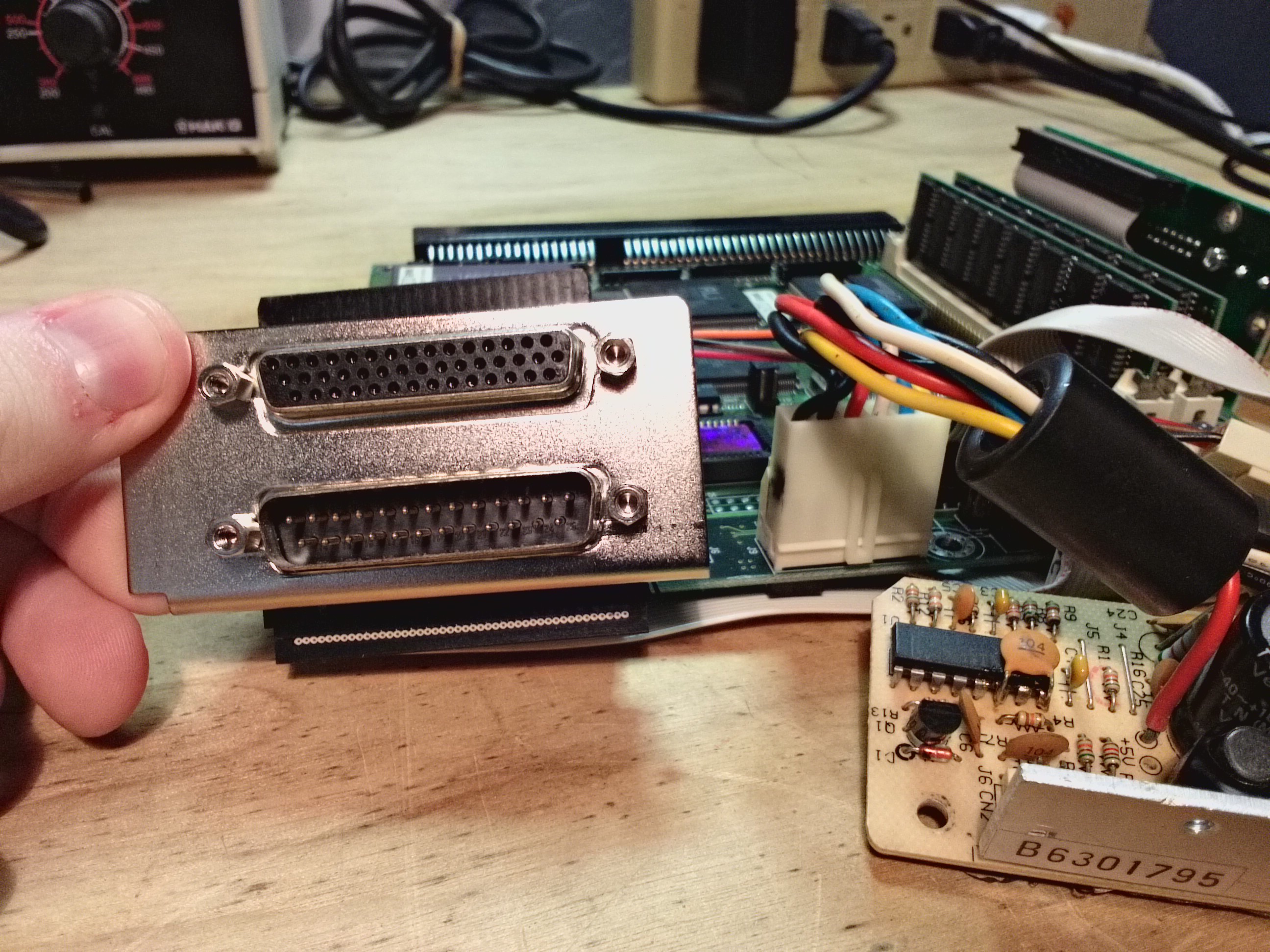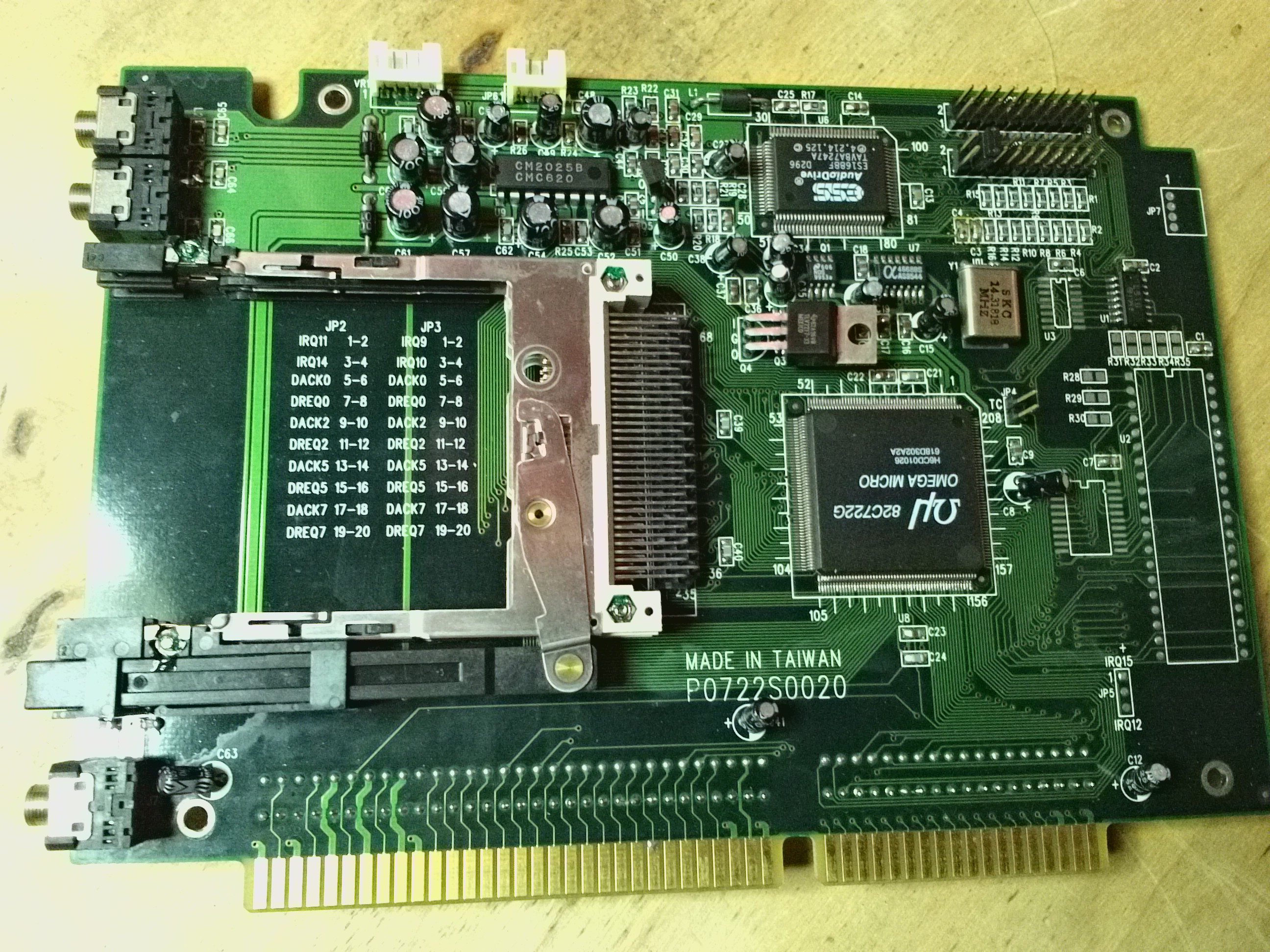A quick breakdown of the device.
It is an early All-In-One PC, built with the LCD in the chassis and organized to be as compact as possible.


Manufacturer: Planar Advance, Inc.
Model: C2003T
Serial: C2003001
Google gives me nothing useful from the model number, so I assume this was a pretty obscure computer. The serial number makes me think this was the first unit of a very, very small run of custom units, but that's just a guess. Regardless, I haven't found any documentation on it.

The motherboard is what's really exciting. It suits my desires perfectly! It's small, rectangular for easy mounting/enclosing, and the PSU is a separate module. Let's go over the different sections, from the top.
- The top daughterboard is a 0.100" breakout board holding two DB-9 RS-232 ports, one DB-25 parallel port, and a piezo buzzer.
- In the top-right corner of the motherboard, we have an RJ-45 jack I assume is 10Base-T Ethernet.
- The daughterboard to the top-right hosts a VGA port and a PS/2 mouse/keyboard port.
- The daughterboard to the far-right is the internal PSU, which takes a 12v/5A input.
- The daughterboard at the bottom-right is a little bit unusual:

Markings on the case identify these as "EXT. IDE" (top) and "EXT FDD" (bottom). Above the external IDE port is a 44-pin ribbon cable that connected to the original HDD. I'm assuming that the external IDE port would be the IDE Slave, and the little cable connects to the Master.
On the left edge of the motherboard is a single ISA slot, I assume. Inserted in this slot was the most unusual ISA peripheral I have ever seen.

It appears to be a combination of every peripheral that wouldn't fit on the motherboard, including a PMCIA host and audio card. The unpopulated ICs and connectors don't give me much to go on, but I'm guessing they are for a dial-up modem. One of the white connectors along the top was hooked to a volume control dial mounted on the chassis. The other white connector was hooked to two dials, controlling brightness and contrast of the LCD.
Speaking of the LCD, it's trash. As you might have noticed in the first image, the polarizing layer has wrinkled up. It connects tot he motherboard via a fine-pitch ribbon cable, very much like a laptop. I doubt I could find a compatible replacement, but research suggests that I could pull the polarizing filter off another LCD and attach it to this one. It's a tricky process, though, with a high risk of failure. I'm not even sure it'd be worth it. The wrinkling is ugly, but the LCD works fine otherwise. There's also a VGA connector, and I have a massive stockpile of VGA LCDs.
So what's the plan?
- Build an adapter cable to accept a standard IDE HDD and standard floppy drive. That's all I require to get the whole thing functional!
- Build a new chassis. The all-in-one design is cool, but not especially useful for me. I want to use this as a testbed for low-level digital hacking and experimenting on a primitive x86 system. I'm picturing a suitcase-style enclosure with built-in screen and exposed motherboard.
- Fill those empty L2 sockets! Look at them. Just screaming for an upgrade!
 Steven Gann
Steven Gann

Did you ever get any farther on this project? I was just given a very similar one - same brand, model C2000D - and was thinking about how to create adapters to plug into the external floppy and ide ports.
Also, does the board on yours have a BIOS battery? Mine seems to be dead, but I can't find the dang thing on the board!